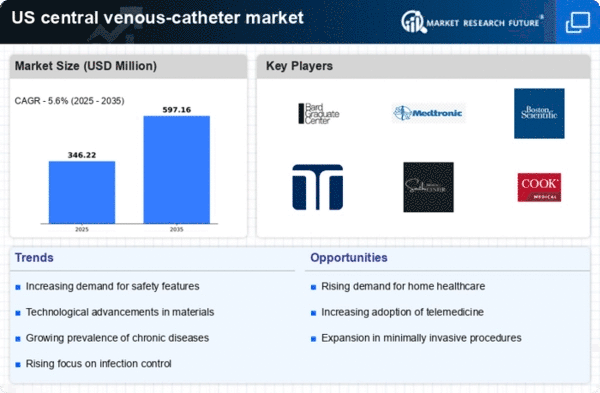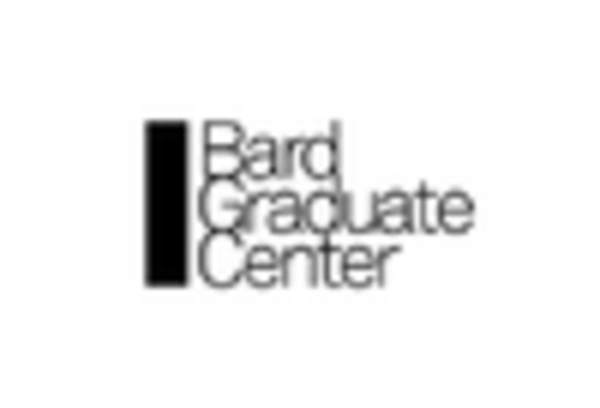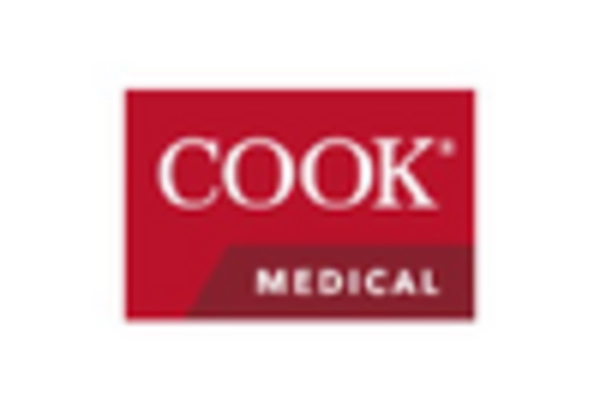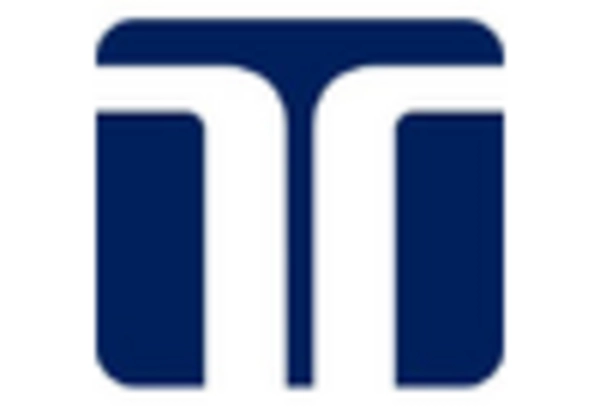Increased Focus on Patient Safety
Patient safety has become a paramount concern in healthcare, driving changes in the central venous-catheter market. Regulatory bodies and healthcare organizations are emphasizing protocols to minimize catheter-related complications. This focus has led to the development of guidelines and best practices for catheter insertion and maintenance. As a result, healthcare facilities are more inclined to invest in high-quality catheters that comply with safety standards. The central venous-catheter market is expected to expand as hospitals prioritize patient safety, potentially leading to a rise in demand for products that meet stringent safety criteria.
Growth of Home Healthcare Services
The expansion of home healthcare services is influencing the central venous-catheter market. As more patients receive treatment at home, the need for reliable venous access solutions increases. Home healthcare allows for the administration of medications and therapies in a comfortable environment, which is particularly beneficial for patients with chronic conditions. This trend is likely to drive demand for central venous catheters designed for home use, as they must be user-friendly and safe for non-professional caregivers. The central venous-catheter market may see a notable increase in sales as home healthcare continues to grow, potentially reaching a market value of $1 billion by 2027.
Rising Incidence of Chronic Diseases
The increasing prevalence of chronic diseases in the US is a primary driver for the central venous-catheter market. Conditions such as cancer, diabetes, and cardiovascular diseases necessitate long-term venous access for treatment and management. According to the CDC, chronic diseases account for 7 of the 10 leading causes of death in the US, highlighting the urgent need for effective medical interventions. This trend is likely to propel the demand for central venous catheters, as healthcare providers seek reliable solutions for administering medications, fluids, and nutrition. The central venous-catheter market is expected to grow as hospitals and outpatient facilities expand their capabilities to manage these patients effectively, potentially increasing market revenues significantly.
Technological Innovations in Catheter Design
Innovations in catheter technology are transforming the central venous-catheter market. New materials and designs enhance the safety and efficacy of catheters, reducing complications such as infections and thrombosis. For instance, the introduction of antimicrobial coatings and advanced insertion techniques has shown promise in minimizing infection rates. The market is witnessing a shift towards devices that offer improved patient comfort and ease of use for healthcare professionals. As hospitals invest in advanced medical technologies, the central venous-catheter market is likely to benefit from increased adoption of these innovative products, potentially leading to a market growth rate of over 5% annually.
Aging Population and Increased Healthcare Expenditure
The aging population in the US is a significant driver of the central venous-catheter market. As individuals age, they often experience multiple health issues that require medical interventions, including the need for central venous access. The US Census Bureau projects that by 2030, all baby boomers will be over 65, leading to a surge in healthcare demands. Additionally, increased healthcare expenditure by both public and private sectors is likely to support the growth of the central venous-catheter market. With more funds allocated to healthcare, hospitals are expected to invest in advanced catheter technologies, thereby enhancing market growth prospects.

















Leave a Comment